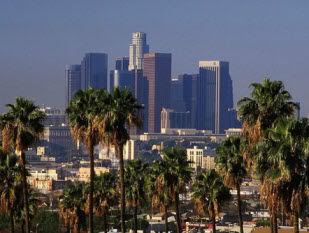
Every destination on our planet has a history, and a lot of times it’s the history and the hope of experiencing the remnants of the olden days, that pulls travelers around the world to visit it. A lot of travelers believe in knowing the origins and the antiquity of the places that they travel to. Today’s blog is for those excursionists whose passion to explore a particular city goes much beyond sightseeing the regular tourist hotspots. The City of Angels that boasts some of the most charming hangouts, amusement parks, and shopping arcades, which are usually a part of any Los Angeles vacation package, was equally alluring more than 50 years ago. Let’s get to know a few historic facts of the city and also get introduced to those entertaining places of the yesteryear Los Angeles.
Los Angeles Alligator Farm – (1907 – 1953)
The Los Angeles Alligator Farm was a major city tourist attraction included in Los Angeles Tours, from 1907 till 1953. Originally situated across Lincoln Park, at 3627 Mission Road, it moved to Buena Park, California in 1953, where it was renamed as the California Alligator Farm. The attraction was shut down in the 1970s when the annual attendance of people dropped below 50,000, and the alligators were relocated to a private estate in Florida.
The Herald-Examiner – (1903-1989)
Los Angeles daily newspaper owned by William Randolph Hearst was a fierce competitor to the Los Angeles Times. It went out of business in 1989 due to a prolonged strike by the Herald Examiner employees that resulted in massive losses, leaving the Los Angeles Times as the sole city-wide daily newspaper
Los Angeles Ostrich Farm – (1896 – 1935)
The Ostrich Farm in Los Angeles was a popular tourist destination, where only for 25 cents visitors could ride ostriches, view baby ostriches, and watch ostriches being fed oranges. Ostrich feathers were in huge demand during those times, and only the wealthy could afford them.
Los Angeles Railway (LARy) – (1901 – 1963)
L.A. Railway was a system of streetcars that were operated on the streets of the Los Angeles from 1901 to 1963 on narrow gauge tracks. This system was located in densely populated central Los Angeles, serving the core of the city and nearby neighborhoods. Popularly known as “Yellow Cars”, the system was purchased by railroad and real estate tycoon Henry Huntington in 1898. The streetcar lines of the Yellow Cars were taken over by a government agency in 1958, which removed all the lines in 1963.
Marineland of the Pacific – (1954-1987)
Marineland of the Pacific was the world’s largest public oceanarium located on the Palos Verdes Peninsula coast above the Pacific Ocean in Los Angeles County. Marineland was home to Orky and Corky, two of the most famous Orcas or “killer whales” at the time. Marineland also housed pilot whales, dolphins, sea lions, harbor seals, sharks, and a variety of beautiful sea creatures. In the mid 1980s Harcourt Brace, Johanovich, the owner of the Sea World ocean park family purchased the Marineland property, and moved Orky, Corky, and other sea creatures to San Diego Sea World, where Corky was given a new name – “Shamu”.
The Broadway – (1896 – 1996)
The Broadway a mid-level department store chain headquartered in Los Angeles was one of the most dominant retailers in Southern California and the Southwest. In 1996 the chain was acquired by Federated Department Stores and the majority of locations were reopened as Macy’s, Bloomingdale’s, and Sears.
These were a few jewels which made the City of Angels what it is today! They have set a benchmark for all the Los Angeles sightseeing tours from 1900’s. It is truly the city that attracts people from all over the world and the city that has maintained its reputation of being “addictive”.




There are no comments.